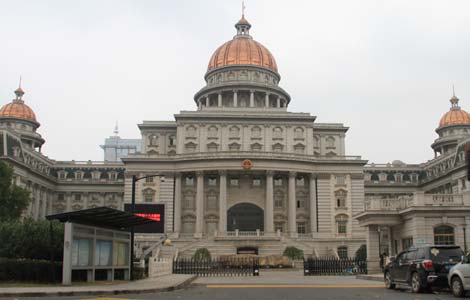
Rising wages and shrinking export demand are forcing manufacturers to relocate to neighboring Southeast Asian nations and many that remain are seriously considering moving, a foreign trade official from the Ministry of Commerce said.
The official, who declined to be named, said that "nearly one-third of Chinese manufacturers of textiles, garments, shoes and hats "are now working" under growing pressure" and have moved all, or part of their production, outside China in what he called the great industrial transfer.
Favored destinations are usually members of the Association of Southeast Asian Nations, especially Vietnam, Indonesia and Malaysia.
And in all likelihood, "the trend will continue" with more traditional labor-intensive manufacturers transferring production, he told China Daily.
Liang Shiyu, director of the administrative office at the China Chamber of Commerce for the Import and Export of Textiles, confirmed that a slew of manufacturers have moved part or all of their business abroad.
But the foreign trade official said that while some job losses occurred during the transfer, the phenomenon is "basically positive," and is "in line with" government commitments to upgrade China's industrial power and change its model of economic growth.
The 12th Five-Year Plan (2011-15) urges exporters to produce more high-end goods.
Exporters are also actively seeking new ways to conduct business as export momentum declines due to a combination of negative factors at home and abroad, from higher labor costs to sluggish demand from the European Union and the United States.
China's labor costs have surged recently by 15 to 20 percent annually, squeezing margins and driving some companies to bankruptcy.
According to the Ministry of Human Resources and Social Security, from January to June this year, the minimum wage was raised, on average, by 20 percent in 16 provinces.
The minimum wage in Shenzhen now stands at 1,500 yuan ($238) per month, setting the highest standard for the whole Chinese mainland.
Many developing countries in Southeast Asia have lower labor costs.
The monthly wage for manufacturing jobs in Vietnam was, on average, 600 yuan in 2011, equivalent to the level of 10 years ago in Dongguan, an industrial town in South China's Pearl River Delta.
Some ASEAN countries, including Vietnam, have extended preferential policies in land use and utilities to foreign investment, including that from China.
Garment and textile companies have moved out of the Pearl River Delta to other locations in Southeast Asia.
Xiao Yujing, general manager of Zhongshan Liancheng Co, complained that it is increasingly difficult for his denim company to find international buyers at the China Import and Export Fair, better known as the Canton Fair.
Buyers have "turned their eyes to manufacturers from Southeast Asian countries", he noted, which has forced him to plan to relocate part of his business.
"We will try Cambodia, where labor costs are about just one-fourth of what we have in the Pearl River Delta," he said.
This is not just about domestic companies. Multinational corporations in China are also strategically relocating.
Adidas closed its factory in Suzhou, Jiangsu province, which employed 160 people.
Nike closed its only Chinese footwear factory, also based in Suzhou, in 2009.
Partly because of China's rising costs, foreign direct investment has been suffering in recent months.
According to a survey by the Capital Business Credit, a US-based financial consultancy firm, 40 percent of major companies interviewed said they have plans to move factories from China to other locations, including Vietnam, Pakistan, Bangladesh and the Philippines.
Huo Jianguo, director of the Chinese Academy of International Trade and Economic Cooperation, affiliated to the Ministry of Commerce, said the move by some firms to Southeast Asia is both "clear" and "understandable."
Huo said China is still an attractive destination for manufacturing investors, thanks to its large domestic market, its relatively mature investment environment, and its skilled workforce.
"We also note some manufacturers and foreign companies are moving operations from coastal regions to central and western areas," he said. An example he cited was Samsung, which announced this year its largest overseas investment deal will be located in Xi'an, a city in Northwest China.
But lower costs in other countries could soon change, some said.
"The advantage (of labor and production costs) in Southeast Asian countries will only last for a few years," said Chen Jian, a general manager of a garment company headquartered in Foshan, on the Pearl River Delta.
"The trend is just like what happened some 10 years ago when many manufacturing industries in Hong Kong and Taiwan moved to the Pearl River Delta to chase cheap labor. But now you can see how much our labor costs have gone up."
Contact the writers at dingqingfen@chinadaily.com.cn and qiuquanlin@chinadaily.com.cn
Yu Ran in Shanghai contributed to this story.







